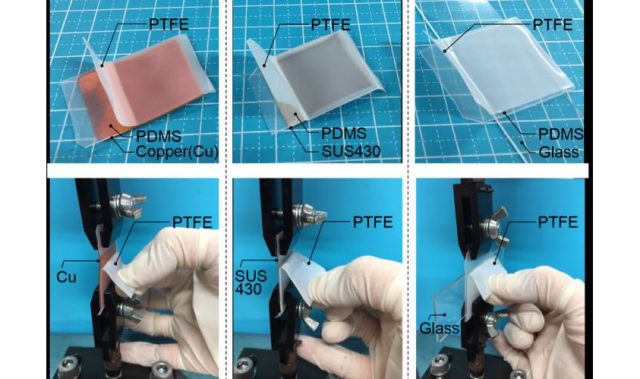
AsianScientist (Aug. 1, 2017) – Using lasers and X-rays to detect movements at the atomic scale, an international team of researchers have reported the first direct observations of a material’s dynamic fracture. The study was published in the journal Science Advances.
Dynamic fracture is the fragmentation of a material because of stress, such as during impact. This has obvious importance for the debris shielding of materials used in aircraft, spacecraft, satellites, nuclear reactors and armor, as well as in general engineering and manufacturing.
Until now, the dynamic fracture of materials has only been observed using bulk-scale techniques such as measuring fragment speeds or forensically examining samples. Dynamic fracture at the atomic scale could only be studied using computer simulations since the size range that could be observed in materials by experimental techniques was too narrow.
In this study, the researchers used a laser pump and a X-ray probe to detect movement, such as stretching and compression, in the atomic structure of tantalum under high stress. Tantalum is a metal used in alloys to increase their strength and corrosion resistance.
The researchers used a laser to produced a shock in a thin piece of tantalum. The X-ray probe was then used to measure the spacing of atoms on the opposite side of the tantalum. This technique is extremely sensitive to atoms near the surface, which are the ones most closely associated with surface damage.
“The evolution of lattice deformation associated with the ultrafast fracture in tantalum is given by a time series of X-ray diffraction patterns,” explained Dr. Bruno Albertazzi from École Polytechnique in France, a co-author of the study. “This deformation showed us the shocked part of the tantalum, which is extremely small, but the shock travels through the tantalum at nearly five kilometers per second.”
The measurements, carried out at the Spring-8 synchrotron complex in Japan, showed a decrease in the spacing of tantalum atoms immediately before fracture. These observations were validated using computer simulations and help explain why tantalum’s strength becomes compromised.
The scientists suggested that this technique can be used to investigate high-speed cracking and other stress-related effects.
“This method bridges the gap in the understanding of the relationship between atomic structure and material properties,” said Associate Professor Norimasa Ozaki from Osaka University.
Movement in a material’s atomic structure under stress can now be observed in real time, and an important material property—the stress required for fracture—can be determined. This knowledge will benefit the design and manufacturing of equipment and technologies where resistance to impact is paramount.
The article can be found at: Albertazzi et al. (2017) Dynamic Fracture of Tantalum Under Extreme Tensile Stress.
———
Source: Osaka University; Photo: Shutterstock.
Disclaimer: This article does not necessarily reflect the views of AsianScientist or its staff.












